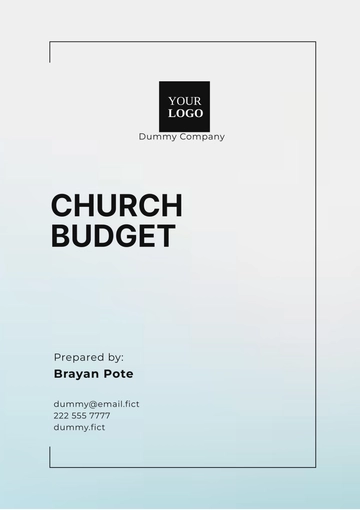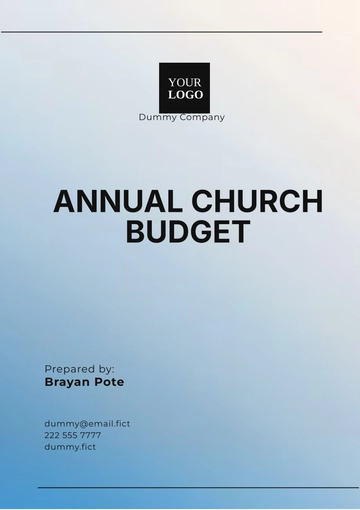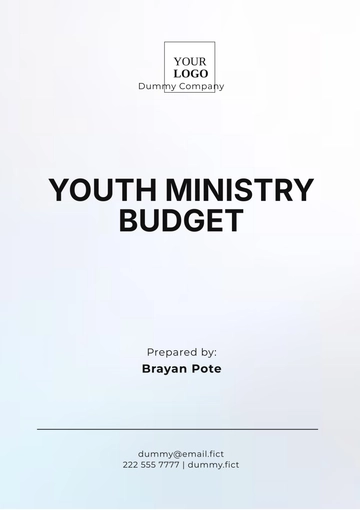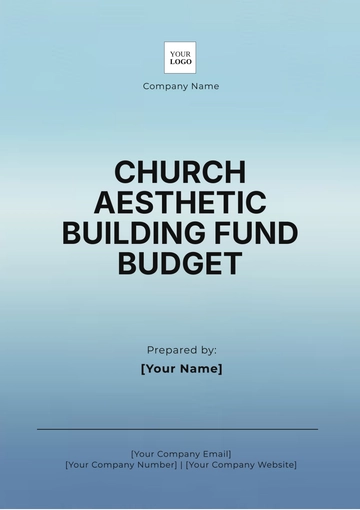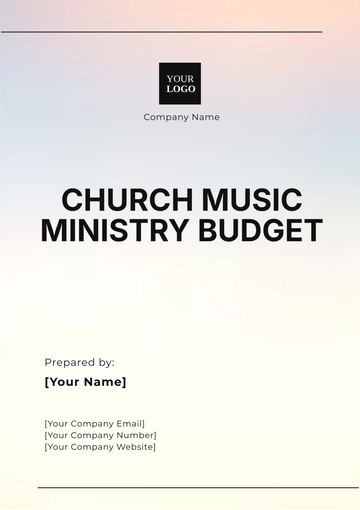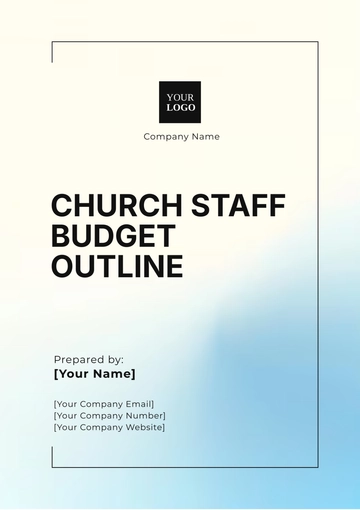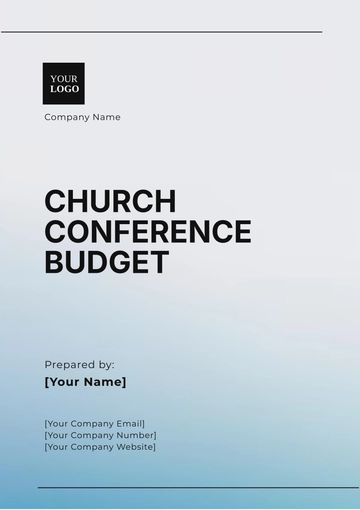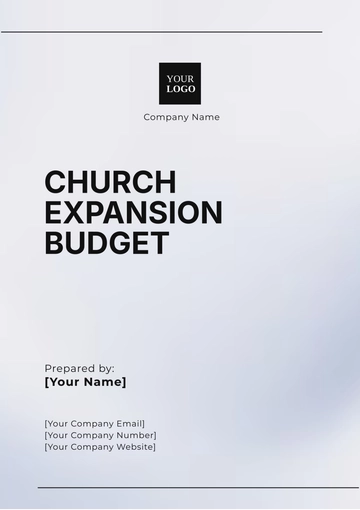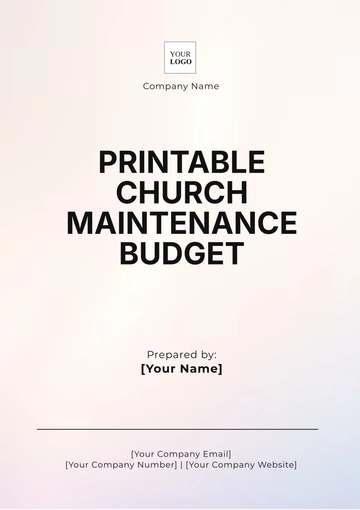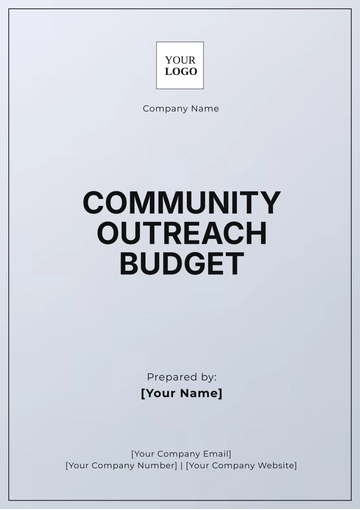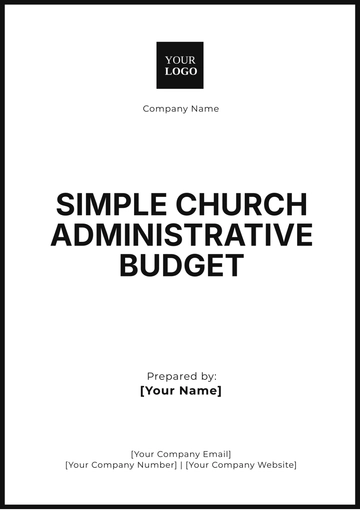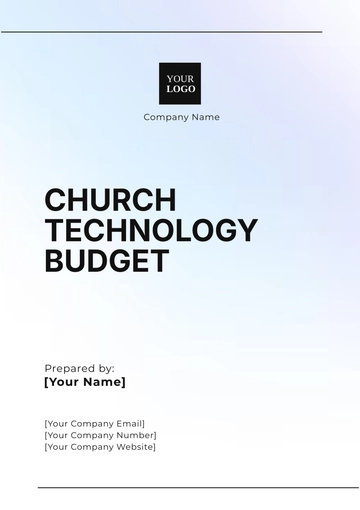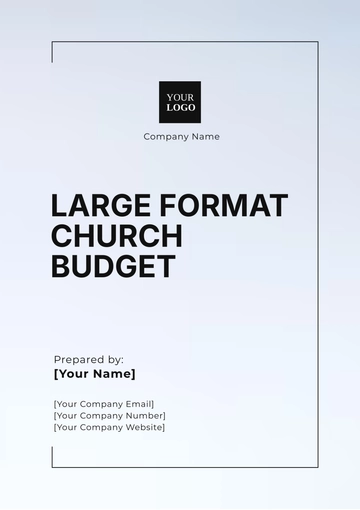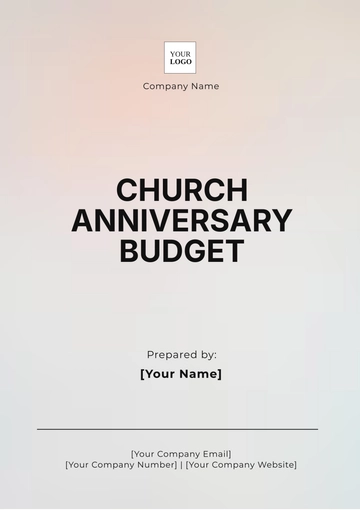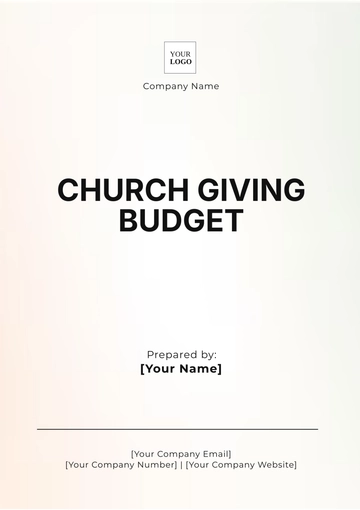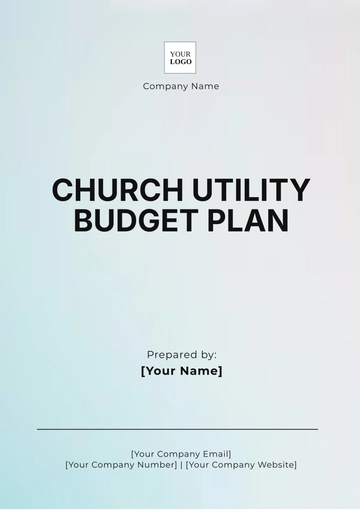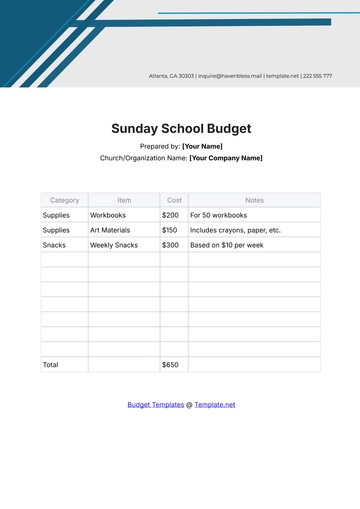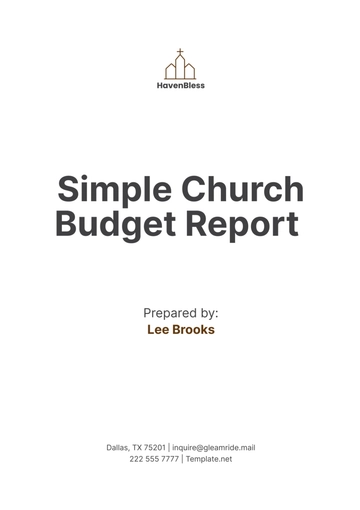Free Church Financial Growth Budget

1. Income Sources
Tithes and Offerings
Tithes and offerings represent a vital foundation of the church’s financial support. These contributions from the congregation not only reflect their faith but also play a key role in sustaining the church’s mission and day-to-day operations. Proper recording and stewardship of these funds are essential to ensure both transparency and fiscal responsibility.
Monthly Tithes: $10,000
Special Offerings: $5,000
Fundraising Events
In addition to regular contributions, the church organizes periodic fundraising events. These activities are designed to raise funds for specific initiatives, and projects, or to meet general operational needs. Events such as charity run and bake sales foster community engagement while providing essential financial support.
Annual Charity Run: $3,000
Spring Bake Sale: $1,500
Grants and Sponsorships
The church also seeks external funding through grants and sponsorships from businesses and organizations that share its values. These contributions are particularly valuable for major projects or when covering significant operational costs.
Local Business Sponsorship: $2,000
Community Grant: $4,000
2. Expenditures
Salaries and Wages
The church’s personnel, including the minister, administrative staff, and other support members, are compensated for their dedicated service. These salaries are a core component of the budget, ensuring that church operations run smoothly and that staff are supported in their roles.
Minister’s Salary: $4,000/month
Administrative Staff: $2,500/month
Utilities and Maintenance
To maintain an inviting and functional environment, the church incurs regular utility and maintenance costs. These include basic utilities like electricity and water, as well as property upkeep and repairs.
Electricity: $500/month
Water: $200/month
Maintenance: $600/month
Outreach Programs
The church is committed to giving back through its outreach programs, which are vital for helping both the congregation and the broader community. These programs include regular food drives, shelters for the homeless, and educational initiatives aimed at enriching lives.
Food Drive: $1,000/month
Educational Programs: $800/month
3. Financial Projections
The following table highlights the estimated quarterly income and expenditures, providing a clear picture of the church's expected financial standing.
Quarter | Estimated Income | Estimated Expenditures | Net Surplus/Deficit |
|---|---|---|---|
Q1 | $50,000 | $40,000 | $10,000 |
Q2 | $45,000 | $42,000 | $3,000 |
Q3 | $48,000 | $39,000 | $9,000 |
Q4 | $52,000 | $41,000 | $11,000 |
These projections demonstrate steady income growth with careful expenditure management, resulting in a healthy financial surplus that can be reinvested into church activities and expansion plans.
4. Financial Goals and Strategies
Short-Term Goals (Next 12 Months)
These goals focus on strengthening the church’s financial foundation and expanding its impact through outreach programs.
Increase tithes and offerings by 10%: Strengthen engagement with the congregation to enhance regular giving.
Organize two additional fundraising events annually: Introduce more community-focused events to boost overall fundraising.
Apply for at least three new grants: Target grants that align with community-building and outreach projects to diversify funding sources.
Long-Term Goals (Beyond 12 Months)
The church aims to achieve substantial growth and deeper community engagement over the next few years.
Build a community center within five years: Establish a dedicated space for community events, outreach programs, and educational activities.
Grow outreach program funding by 50% within three years: Enhance the scale and reach of existing outreach efforts, providing more robust support to those in need.
Establish a scholarship fund for underprivileged students: Create opportunities for education by providing financial support to students from low-income backgrounds.
5. Conclusion
A well-structured financial plan is integral to the church’s ability to sustain its mission and expand its outreach. This budget outlines the primary sources of income, critical expenditures, and both short- and long-term financial goals that will ensure the church continues to grow while supporting its community. Through disciplined financial management and strategic initiatives, the church will remain a beacon of hope and service for years to come.
- 100% Customizable, free editor
- Access 1 Million+ Templates, photo’s & graphics
- Download or share as a template
- Click and replace photos, graphics, text, backgrounds
- Resize, crop, AI write & more
- Access advanced editor
Manage your church’s finances with ease using the Church Financial Growth Budget Template from Template.net. This fully customizable and editable template helps you plan and track your budget efficiently. Editable in our Ai Editor Tool, you can tailor every detail to fit your church’s financial needs, ensuring clear and effective financial growth planning.
You may also like
- Budget Sheet
- Personal Budget
- Non Profit Budget
- Monthly Budget
- Project Budget
- HR Budget
- Company Budget
- Home Budget
- Weekly Budget
- College Budget
- Business Budget
- Construction Budget
- Small Business Budget
- Hotel Budget
- Annual Budget
- Home Renovation Budget
- Household Budget
- Student Budget
- Grocery Budget
- Marketing Budget
- Corporate Budget
- Startup Budget
- Manufacturing Budget
- Church Budget
- University Budget
- Annual Budget Plan
- Event Budget
- Operating Budget
- Travel Budget
- Food Budget
- IT and Software Budget
- School Budget
- Real Estate Budget
- Sales Budget
- Conference Budget
- Budget Finance
- Freelancer Budget
- Budget Advertising

